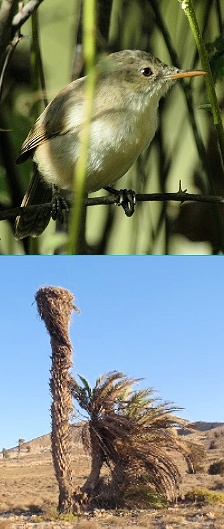A CAGARRA
Boletim de Sociedade Caboverdiana de Zoologia
Edited by | Editado por Cornelis J. Hazevoet cjhazevoet at gmail.com
No. 6 - JUNE / JUNHO DE 2014

Have you seen, heard or read something of zoological interest? Let us know!
Viu, leu ou ouviu algo com interesse zoológico recentemente? Informe-nos!
Acrocephalus brevipennis
The Cape Verde warbler Acrocephalus brevipennis is an endangered passerine endemic to the Cape Verde Islands, with an estimated total population of ca. 1,500 birds. Until recently, this warbler was thought to be confined to Santiago. However, in 1998 and 2004 small populations were discovered in São Nicolau (where it was thought to be extinct) and Fogo, respectively. In the past, the species also occurred in Brava island, but surveys during the past three decades have failed to find it there. Despite these discoveries, its population seems to be declining as a result of drought and subsequent habitat loss. The species’ precise distribution, population numbers, trends and long term viability are unknown. Very little is known about how similar, or different, the three populations of warblers are. Given the relatively large distances between these islands, it is possible that genetic and ecological differences may exist. For example, the habitat used and threats faced, may differ between populations.
The Direcção Geral do Ambiente (DGA) and other organizations are currently developing a conservation action plan for the warbler. Incorporating information about how the populations of the species differ is likely to increase the effectiveness of this plan. With this in mind, our team at the University of East Anglia (UEA) and BirdLife International, in collaboration with DGA, the Instituto Nacional de Investigação e Desenvolvimento Agrário (INIDA), Biosfera I and the Parques Naturais of Serra Malagueta (Santiago), Monte Gordo (São Nicolau) and Fogo, started a project to study the genetic, morphological and ecological proporties of the three island populations of the Cape Verde warbler.
From November 2013 to January 2014 we visited Cape Verde to locate, catch, measure and sample the warbler on all three islands where populations are known to exist at present. We studied 95 individuals: 50 from Santiago, 30 from Fogo and 15 from São Nicolau. In Santiago, most of the individuals were caught in São Jorge dos Órgãos and Serra Malagueta. In Fogo, they were all caught in the coffee plantations on the slopes close to Mosteiros. In São Nicolau, birds were caught in the Natural Park of Monte Gordo and the Ribeira Queimada valley. We ringed each bird individually with a unique combination of one metal and three colour-rings (two on each leg) and released them where they were originally caught. The colours used were red, blue, white, yellow and orange. The colour ring combinations allow us to identify each bird individually without the need to recapture them, thus allowing us to monitor their survival, behaviour and territory use. Although detailed assessments of habitat use and behaviour require the use of precise protocols by experienced biologists, assessment of survival and territory can greatly benefit from records of locations where the ringed birds have been seen. Therefore, we would encourage anyone who observes one of the ringed birds to carefully record the ring combination (in top-down order and colour of each of the four rings on the bird’s legs) and the location and date of the sighting, and send it to us at h.batalha@uea.ac.uk. Even if it is not possible to record the full colour combination, we would still appreciate receiving any sightings of colour ringed Cape Verde warblers, with date and location.
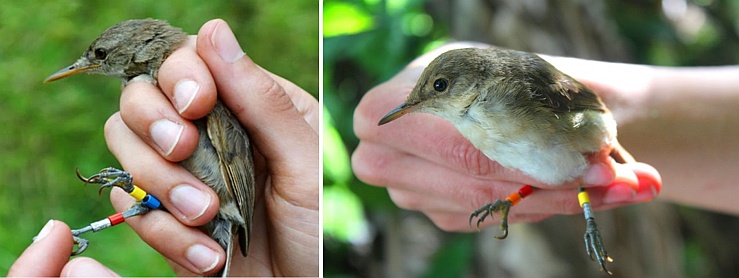
© Andrew Power and Josh Jenkins Shaw.
We would like to thank DGA for permission to carry out this research, as well as all other national authorities, funding organizations, assistants and collaborators for their help and support.
Helena Batalha, David Richardson, Iain Barr (University of East Anglia), Nigel Collar (BirdLife International).
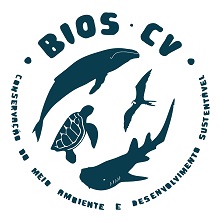 The 2014 humpback whale Megaptera novaeangliae
season in Boa Vista ran from 11 March to 31 May. As in previous years,
the whale watching area included the coastal waters off northwestern
Boa Vista between Ponta do Sol (the northernmost point) and Morro de
Areia (the southernmost point). BIOS.CV staff participated in 83
whale-watching tours, meaning a total effort of 208 hours on board and
2,110 km of navigation. In summary, we reported 93 humpback whale
sightings and five dolphin sightings (four of rough-toothed dolphin Steno bredanensis and one of pantropical spotted dolphin Stenella attenuata).
There were 18 sightings of mother and calf pairs, while the estimated
number of different calves observed during the whole season was 11.
Among the most remarkable sightings was that of North Atlantic humpback
whale (NAHW) 4756, a male photographed in Boa Vista in 2009, 2011 and
2013, and off Guadalupe Island (Caribbean) in 2012, demonstrating that
there may be male-mediated gene flow between the eastern and western
North Atlantic humpback whale breeding populations (see also A Cagarra
No 5, March 2014). Another interesting re-sighting was that of NAHW
4810, a female first photographed off Bear Island (Norway) in 1984 and
then in Boa Vista in 2004, 2011 (with a calf) and 2014 (again with a
calf). Sightings like these show the long life expectation of these
whales and the strong site fidelity of females to their breeding
grounds. We would like to thank the authorities of Cape Verde and the
companies (Somague and MSF) responsible for the construction of the new
harbour of Sal-Rei, Boa Vista, for postponing blasting activities until
mid-June in order to avoid a potentially detrimental impact of these
works on this endangered whale population.
The 2014 humpback whale Megaptera novaeangliae
season in Boa Vista ran from 11 March to 31 May. As in previous years,
the whale watching area included the coastal waters off northwestern
Boa Vista between Ponta do Sol (the northernmost point) and Morro de
Areia (the southernmost point). BIOS.CV staff participated in 83
whale-watching tours, meaning a total effort of 208 hours on board and
2,110 km of navigation. In summary, we reported 93 humpback whale
sightings and five dolphin sightings (four of rough-toothed dolphin Steno bredanensis and one of pantropical spotted dolphin Stenella attenuata).
There were 18 sightings of mother and calf pairs, while the estimated
number of different calves observed during the whole season was 11.
Among the most remarkable sightings was that of North Atlantic humpback
whale (NAHW) 4756, a male photographed in Boa Vista in 2009, 2011 and
2013, and off Guadalupe Island (Caribbean) in 2012, demonstrating that
there may be male-mediated gene flow between the eastern and western
North Atlantic humpback whale breeding populations (see also A Cagarra
No 5, March 2014). Another interesting re-sighting was that of NAHW
4810, a female first photographed off Bear Island (Norway) in 1984 and
then in Boa Vista in 2004, 2011 (with a calf) and 2014 (again with a
calf). Sightings like these show the long life expectation of these
whales and the strong site fidelity of females to their breeding
grounds. We would like to thank the authorities of Cape Verde and the
companies (Somague and MSF) responsible for the construction of the new
harbour of Sal-Rei, Boa Vista, for postponing blasting activities until
mid-June in order to avoid a potentially detrimental impact of these
works on this endangered whale population.
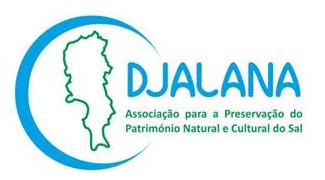 A
defesa e preservação do patrimônio natural e ambiental é uma tarefa
extremamente importante em todos os setores da vida. A conscientização
sobre a necessidade desta conservação para presentes e futuras gerações
é incontestável. A proteção e conservação das tartarugas marinhas como
património natural mundial é também responsabilidade nossa, pois, o
nosso país, alberga uma das maiores populações da tartaruga comum que,
no entanto, continua a ser uma das mais ameaçadas do atlântico norte. O
projeto ‘Educar para preservar’ tem como objetivo proporcionar aos
jovens do Sal (e possivelmente de outras ilhas) e famílias, a
extraordinária oportunidade, de conhecer território privilegiado da
desova das tartarugas marinhas. Pretende-se deste modo possibilitar aos
jovens e seus familiares um envolvimento direto na gestão sustentável
dos recursos marinhos através de um conjunto de atividades práticas de
conservação e sensibilização. O projeto terá inicio a 20 de Julho e
decorrerá até 20 de Setembro de 2014. Local e ilha de implementação do
projeto: Rabo de Junco (Monte Leão), ilha do Sal, e esporadicamente em
outras zonas autorizadas e em parceria com projetos existentes. Para
mais informações contacte ONG Djalana (Associação para a Preservação de
Património Natural e Cultural do Sal), Cidade de Espargos, Sal,
telefone: 9381105/9947881, email: djalana2013 at gmail.com
A
defesa e preservação do patrimônio natural e ambiental é uma tarefa
extremamente importante em todos os setores da vida. A conscientização
sobre a necessidade desta conservação para presentes e futuras gerações
é incontestável. A proteção e conservação das tartarugas marinhas como
património natural mundial é também responsabilidade nossa, pois, o
nosso país, alberga uma das maiores populações da tartaruga comum que,
no entanto, continua a ser uma das mais ameaçadas do atlântico norte. O
projeto ‘Educar para preservar’ tem como objetivo proporcionar aos
jovens do Sal (e possivelmente de outras ilhas) e famílias, a
extraordinária oportunidade, de conhecer território privilegiado da
desova das tartarugas marinhas. Pretende-se deste modo possibilitar aos
jovens e seus familiares um envolvimento direto na gestão sustentável
dos recursos marinhos através de um conjunto de atividades práticas de
conservação e sensibilização. O projeto terá inicio a 20 de Julho e
decorrerá até 20 de Setembro de 2014. Local e ilha de implementação do
projeto: Rabo de Junco (Monte Leão), ilha do Sal, e esporadicamente em
outras zonas autorizadas e em parceria com projetos existentes. Para
mais informações contacte ONG Djalana (Associação para a Preservação de
Património Natural e Cultural do Sal), Cidade de Espargos, Sal,
telefone: 9381105/9947881, email: djalana2013 at gmail.com

Remote underwater video methodology: a) Intova and GoPro cameras attached to a heavy pedestal; b) Frame with the plot area (2 m²) demarcated; c) Sparisoma cretense (parrotfish) feeding.
© José Carvalho.

© Pedro López Suarez & Rui Freitas.
National and international support for the ospreys of Boa Vista
 Congratulations to NGO BIOS.CV of Boa Vista, who have received grants from the Direcção Geral do Ambiente (Cape Verde) and the International Osprey Foundation (USA) for the construction of 5-6 elevated nesting platforms for ospreys Pandion haliaetus
in order to minimize disturbance by humans and feral cat predation,
which are among the most important causes of breeding failure in Boa
Vista (see SCVZ Newsletter No. 4, January 2014). The nesting platforms
are intended to be in place before the start of the 2015 breeding
season, thus hopefully giving way to more breeding success than has
been the case in recent years. Funding for this project was also
received from Cabeólica S.A., who have supported bird monitoring activities in Boa Vista over the past three years, while CV Telecom
will donate telephone poles to carry the nesting platforms. In
addition, awareness activities, aimed at both the local community and
tourists and high-lighting the need to safeguard the osprey as an
emblematic – and one of the most endangered – species of Cape Verde,
are being developed, including an instructive brochure in Portuguese
and English on osprey biology and conservation.
Congratulations to NGO BIOS.CV of Boa Vista, who have received grants from the Direcção Geral do Ambiente (Cape Verde) and the International Osprey Foundation (USA) for the construction of 5-6 elevated nesting platforms for ospreys Pandion haliaetus
in order to minimize disturbance by humans and feral cat predation,
which are among the most important causes of breeding failure in Boa
Vista (see SCVZ Newsletter No. 4, January 2014). The nesting platforms
are intended to be in place before the start of the 2015 breeding
season, thus hopefully giving way to more breeding success than has
been the case in recent years. Funding for this project was also
received from Cabeólica S.A., who have supported bird monitoring activities in Boa Vista over the past three years, while CV Telecom
will donate telephone poles to carry the nesting platforms. In
addition, awareness activities, aimed at both the local community and
tourists and high-lighting the need to safeguard the osprey as an
emblematic – and one of the most endangered – species of Cape Verde,
are being developed, including an instructive brochure in Portuguese
and English on osprey biology and conservation.Exhibition about Santa Luzia, Branco and Raso in São Vicente
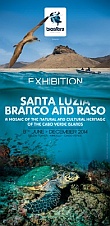 An
exhibiton entitled ‘Santa Luzia, Branco and Raso – A Mosaic of the
Natural and Cultural Heritage of Cabo Verde Islands’, organized by NGO
Biosfera I (Association for Environmental Protection), will be opened
at the Palácio do Povo in Mindelo, São Vicente, on 8 June 2014 and will
stay there for a year.
An
exhibiton entitled ‘Santa Luzia, Branco and Raso – A Mosaic of the
Natural and Cultural Heritage of Cabo Verde Islands’, organized by NGO
Biosfera I (Association for Environmental Protection), will be opened
at the Palácio do Povo in Mindelo, São Vicente, on 8 June 2014 and will
stay there for a year.From the depth of the ocean to the height of the cliffs, from fish and corals to reptiles and birds and the clutter of garbage on Achados beach, the visitor of the exhibition will experience many facets of the largest marine reserve in Cape Verde. One will hear the howling wind and singing birds, discover the private life of reptiles, marvel at the mosaic of colors and textures that constitutes biodiversity and learn about the need to preserve our natural heritage.
SCVZ seeks correspondents in the islands of Fogo and Brava
A SCVZ procura correspondentes nas ilhas do Fogo e Brava
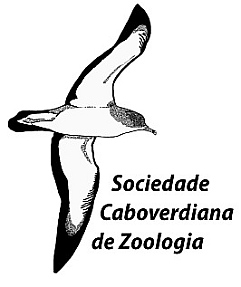 Those
who regularly read this newsletter will have noticed that news from the
islands of Fogo and Brava rarely appears in these columns. Therefore,
we are looking for people who can let us know about zoological news
from these islands, either regularly or occasionally. If you think you
can help, please contact the editor cjhazevoet at gmail.com
Those
who regularly read this newsletter will have noticed that news from the
islands of Fogo and Brava rarely appears in these columns. Therefore,
we are looking for people who can let us know about zoological news
from these islands, either regularly or occasionally. If you think you
can help, please contact the editor cjhazevoet at gmail.comQuem lê regularmente este boletim terá reparado que as notícias sobre as ilhas do Fogo e Brava são raras. Estamos à procura de pessoas que nos façam chegar notícias zoológicas destas ilhas, seja regular seja ocasionalmente. Se acha que nos pode ajudar, por favor contacte o editor em cjhazevoet at gmail.com
ZOOLOGICAL NEWS FROM THE NEWSPAPERS
NOTÍCIAS ZOOLÓGICAS DE JORNAIS
 A
eventual presença do peixe-leão (lion-fish) nos mares de Cabo Verde
está a colocar a comunidade científica cabo-verdiana em estado de
alerta. O problema, segundo o biólogo marinho da Uni-CV, Rui Freitas, é
que este invasor recente no Atlântico Ocidental é conhecido por ser um
predador voraz, que pode ameaçar o equilíbrio de ecossistemas marinhos
costeiros, por alimentar-se de moluscos e peixes juvenis em grande
quantidade e num curto espaço de tempo. O animal tem capacidade para
aumentar o tamanho do seu estômago e chega a dizimar as espécies que
ataca numa determinada área. Além disso, está munido de espinhos
venenosos, que podem ferir e provocar dores intensas a quem for picado.
A
eventual presença do peixe-leão (lion-fish) nos mares de Cabo Verde
está a colocar a comunidade científica cabo-verdiana em estado de
alerta. O problema, segundo o biólogo marinho da Uni-CV, Rui Freitas, é
que este invasor recente no Atlântico Ocidental é conhecido por ser um
predador voraz, que pode ameaçar o equilíbrio de ecossistemas marinhos
costeiros, por alimentar-se de moluscos e peixes juvenis em grande
quantidade e num curto espaço de tempo. O animal tem capacidade para
aumentar o tamanho do seu estômago e chega a dizimar as espécies que
ataca numa determinada área. Além disso, está munido de espinhos
venenosos, que podem ferir e provocar dores intensas a quem for picado.“Se for confirmada, nos próximos tempos, a presença do peixe-leão nas nossas águas, temos sérios motivos para estarmos preocupados”, afirma Rui Freitas, que já comunicou as suas suspeitas à comunidade científica, às autoridades, aos centros de mergulho e aos próprios pescadores. Ainda nenhum exemplar foi efectivamente capturado como prova factual, mas as informações recolhidas até agora indicam que esse predador típico do Índico-Pacífico pode estar a passear pelo Oceano Atlântico, mais precisamente no mar de Cabo Verde.
O sinal laranja foi accionado pelo biólogo após uma conversa com um mergulhador experiente, que lhe falou de um “peixe diferente” que observou no Ilhéu dos Pássaros, em S. Vicente, e em Pássaro de Pau, na ilha de Santo Antão. O carnívoro chamou a atenção do mergulhador pela sua elegância, a forma das suas barbatanas, as riscas espalhadas pelo corpo e a cor. Nessa conversa, o mergulhador descreveu o peixe como “as meninas dos carros alegóricos do Carnaval, enfeitadas com penas coloridas e compridas”. Acrescentou ainda que o animal tinha a cara de um “dragão”. Esta descrição foi suficiente para deixar o biólogo preocupado, pois enquadra-se na descrição perfeita do exótico peixe-leão, também conhecido como peixe-dragão. De imediato, Freitas muniu-se de uma série de fotos de peixes, dentre os quais o peixe-leão, e pediu ao pescador para identificar a espécie que vira. A escolha recaiu nesse temível invasor. “O problema de fundo é o impacto nos ecossistemas que o peixe-leão pode provocar porque ele come as crias indefesas e influencia a cadeia reprodutiva à escala local. É um peixe que se reproduz rapidamente e que não tem predadores naturais no Atlântico. Podemos falar, neste caso, de uma epidemia que seria de difícil resolução”, explica o biólogo, que está a levar a informação do mergulhador com muita seriedade, embora defenda que a questão deva ser abordada com precaução, sem alarmismos desenfreados. Porém, o cientista considera normal a chegada a Cabo Verde desse peixe, devido ao seu estilo de vida.
Segundo um técnico do INDP, ainda não há uma prova concreta da presença do peixe-leão no arquipélago. Mas caso essa informação venha a ser confirmada, não poderia haver notícia mais arrasadora para o sector pesqueiro costeiro. “É uma espécie voraz, que compete com as espécies locais pela comida. Seria um problema de difícil resolução técnica e financeira”, reage a nossa fonte do Instituto Nacional de Desenvolvimento das Pescas, que pede aos mergulhadores e pescadores artesanais para contactarem o INDP caso vejam ou capturem um exemplar. Aliás, o INDP já tem prontos cartazes informativos para colocar nas zonas piscatórias, mas as autoridades ainda não validaram a sua distribuição, segundo consta, para não provocarem falsos alarmes.
Apesar de ser uma espécie característica da região do Índico-Pacífico, o peixe-leão já foi encontrado nalguns países banhados pelo Atlântico-Oeste. Acredita-se que tenha chegado à América do Sul transportado pela fúria do furacão Andrew, que fustigou o estado norte-americano da Florida. Outra hipótese é que ao ser transportado por coleccionadores de peixes exóticos se tenha escapado para o mar. “Entre 1999 e 2010, a espécie invadiu o mar do Caribe, o Golfo do México, o litoral da Costa Rica e do Panamá, a costa da Colômbia e chegou a Venezuela. Teme-se que chegue agora à costa brasileira”, escreve o jornal electrónico brasileiro noticias.terra.com.br. Este órgão informa que se tomaram medidas de controlo em países que detectaram a presença do animal marinho, mas nenhum deles conseguiu erradicar esse invasor. Além disso, o mesmo jornal assegura que os esforços de combate a essa epidemia são muito caros e pouco práticos. No entanto, no Caribe e nas Bahamas há centros de mergulho que caçam esse predador com arpões, como forma de reduzir a sua população. O medo da comunidade científica cabo-verdiana, neste caso do biólogo Rui Freitas, é que o peixe-leão tenha escolhido as águas cabo-verdianas como sua casa. É que no Atlântico ele já mora, efectivamente.
A Semana, 30 de Março de 2014
[SCVZ EDITOR’S NOTE: The species concerned is Pterois volitans (L., 1758) (Actinopterygii, Scorpaenidae). See also
http://myfwc.com/wildlifehabitats/nonnatives/marine-species/lionfish/; http://oceanservice.noaa.gov/facts/lionfish.html.]
mais de 40 anos depois
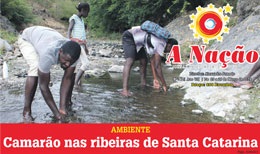 O
reaparecimento de camarão em água doce, na ribeira de Mato Sanches,
Santa Catarina de Santiago, está a despertar a atenção dos moradores e
curiosos. Diariamente, várias pessoas percorrem o vale para apanhar o
crustáceo para a venda e o consumo. Os mais idosos dizem que já tinham
perdido a esperança de voltar a ver camarões no interior de Santiago.
O
reaparecimento de camarão em água doce, na ribeira de Mato Sanches,
Santa Catarina de Santiago, está a despertar a atenção dos moradores e
curiosos. Diariamente, várias pessoas percorrem o vale para apanhar o
crustáceo para a venda e o consumo. Os mais idosos dizem que já tinham
perdido a esperança de voltar a ver camarões no interior de Santiago.A queda da chuva em abundância durante o ano 2013, sobretudo em Dezembro, a par de outras medidas de correcção hidráulica no interior de Santiago, fez aumentar o caudal de água na ribeira de Mato Sanches. E com isso reapareceram camarões naquele vale, mais de 40 anos depois da última observação desse crustáceo no local.
Este facto tem despertado a curiosidade de dezenas de pessoas, designadamente crianças e jovens das diversas localidades de Santa Catarina, inclusive chineses, que percorrerem a ribeira de Mato Sanches à procura de camarões para petisco. O jovem pescador Quinzinho, 29 anos, afirma que é a primeira vez na vida que vê camarões nas ribeiras de Santa Catarina. “Para nós, moradores, isso é motivo de muita alegria. Sobretudo, quando vemos crianças a brincarem na água e, ao mesmo tempo, a apanhar algo para comer. Eu, que sou pescador, nunca imaginei que um dia podia pescar em terra. Saio de casa, vou para a horta, dou meia volta na ribeira e, em pouco tempo, já tenho o que acompanhar o arroz sem ir para o mar".
Por seu turno, o também jovem Adimilson Fernandes, residente em Vinha (localidade de Ribeirão Manuel, que por sinal estava de visita a Mato Sanches à procura de camarão), afirma que ocasionalmente desce à ribeira para divertir-se com amigos e apanhar algum marisco. "Trabalho não há e às vezes falta dinheiro para comprar peixe; graças a Deus, camarão já apareceu na ribeira e temos que aproveitar". Adimilson conta ainda que ele e outros moços já forneceram o edil Francisco Tavares e alguns chineses boa quantidade de camarão. "Os chineses gostaram e nos disseram que o jantar iria ser uma maravilha”.
Já a moradora Maria Isabel Monteiro, 54 anos, mostra-se não menos entusiasmada com o reaparecimento de camarões em Mato Sanches. "É uma alegria enorme ver crianças e jovens, na ribeira, a apanhar camarões, tantos anos depois. Isso faz-me lembrar quando eu era criança e ajudava a minha mãe a encher balaios de camarão para ir vender na cidade da Praia". Isabel confessa que já degustou camarão este ano e na infância, quando havia, comia camarão com batata e mandioca.
O ancião Marcelino dos Santos, 82 anos, conta que desde 1946 que não via tanta água e camarão em Mato Sanches. "Antigamente, as mulheres enchiam balaios e mais balaios de camarão para irem vender na cidade da Praia. E passado todo esse tempo, sinceramente, não esperava voltar a ver água e camarão a correr, em Mato Sanches, em abundância".
Conforme os nossos interlocutores, muitas pessoas estão a telefonar para perguntar e reservar camarões, inclusive emigrantes. "Há muitos pessoas desta localidade emigradas, principalmente em França, que estão a telefonar aos familiares para perguntar sobre esta boa nova. Uns até já solicitaram os familiares a guardar-lhes um bocadinho que seja para, quando vierem de férias no verão, experimentarem ‘camarão di terra’", conta Quinzinho, divertido.
Em relação aos chineses e outros curiosos, a nossa fonte conta que esses aparecem na zona e pagam as crianças para lhes ajudar na procura de camarão. Aliás, encantados com o fenómeno, muitos dos curiosos estão a apanhar os "bichinhos" com ovos, para os criar em cisternas e noutras localidades do concelho com água corrente, nomeadamente ribeira de Selada.
A Nação, 20 de Março de 2014
[SCVZ EDITOR’S NOTE: Three species of fresh water shrimps (Crustacea, Decapoda, Caridea) have been known to occur in Cape Verde, i.e. Atya scraba (Leach, 1816), Macrobrachium chevalieri (J. Roux, 1935) and Macrobrachium vollenhoveni (Herklots, 1857), all of which are widespread in West Africa. In Cape Verde, A. scraba and M. chevalieri are historically known from Santiago, Brava, Santo Antão and São Nicolau, while M. vollenhoveni is known from Santo Antão and São Nicolau. Despite dedicated surveys, none had been found in any of these islands for several decades and all three taxa were considered extinct in Cape Verde. However, fresh water shrimps (probably A. scraba) were found near Coculi, Santo Antão, in 2011 (S. Baliteau in litt.). With the recent return of (as yet unidentified) fresh water shrimps in the Santa Catarina region, Santiago, as related above, hopes are raised that these crustaceans will also be found again in Brava and São Nicolau. Should you encounter fresh water shrimps in any of these four islands, please collect a number of specimens and preserve them in alcohol 70º in order to enable proper taxonomic identification at a later date. Write down where and when they were collected, as well as any other relevant facts about the habitat where they were found. Even without specimens, any information about the occurrence of fresh water shrimps will be gratefully received by the editor. In due course, a comprehensive account on the current status of fresh water shrimps in Cape Verde will be prepared for publication in Zoologia Caboverdiana. All help will be acknowledged.]
Recent papers on Cape Verde zoology and paleontology
Artigos recentes
sobre zoologia e paleontologia Caboverdiana
Breeding habitat of poorly studied humpback whales (Megaptera novaeangliae) in Boa Vista, Cape Verde. Conor Ryan, Darren Craig, Pedro López-Suárez, José Vazquez Perez, Ian O’Connor & Simon D. Berrow, 2013. Journal of Cetacean Research and Management 13 (2): 175-180.
ABSTRACT The waters surrounding Cape Verde comprise one of two known
breeding grounds for humpback whales in the North Atlantic. The
population remains very small and has apparently failed to recover
since the cessation of whaling there. During the breeding seasons of
2011 and 2012, sighting surveys were carried out for humpback whales
off Boa Vista, the easternmost island of the Cape Verde Island
archipelago. The distribution and relative abundance of humpback whales
and mother-calf pairs was investigated by plotting effort-corrected
sightings using a 2 km2 grid-square. The study area, a 206 km2 region
from the coastline up to 8 km offshore, covered the western half of Boa
Vista where whales have previously been regularly recorded. Following
1954 km of search effort, 117 sightings of humpback whales were made.
An encounter rate of 0.11 whales per km was recorded for both years. It
is hoped that these data may assist in implementing conservation
measures to protect humpback whales and the habitat of Baia do Sal Rei,
which appears to be the single most important bay for winter breeding,
calving and nursing humpback whales in the eastern North Atlantic.
Effects of rising temperature on the viability of an important sea turtle rookery. Jacques-Olivier Laloë, Jacquie Cozens, Berta Renom, Albert Taxonera & Graeme C. Hays, 2014. Nature Climate Change 4 (6): 513-518; http://dx.doi.org/10.1038/nclimate2236
ABSTRACT A warming world poses challenges for species with
temperature-dependent sex determination, including sea turtles, for
which warmer incubation temperatures produce female hatchlings. We
combined in situ sand
temperature measurements with air temperature records since 1850 and
predicted warming scenarios from the Intergovernmental Panel on Climate
Change to derive 250-year time series of incubation temperatures,
hatchling sex ratios, and operational sex ratios for one of the largest
sea turtles rookeries globally (Cape Verde Islands, Atlantic). We
estimate that light-coloured beaches currently produce 70.10% females
whereas dark-coloured beaches produce 93.46% females. Despite
increasingly female skewed sex ratios, entire feminization of this
population is not imminent. Rising temperatures increase the number of
breeding females and hence the natural rate of population growth.
Predicting climate warming impacts across hatchlings, male-female
breeding ratios and nesting numbers provides a holistic approach to
assessing the conservation concerns for sea turtles in a warming world.
Agama agama: a charter tourist in the Cape Verde Islands? Raquel Vasconcelos, Evandro Lopes & Bruno H. Martins, 2014. African Journal of Herpetology 63 (1): 34-46;
http://dx.doi.org/10.1080/21564574.2013.877988
ABSTRACT Agama agama is a
successful invader that was recently introduced to Santo Antão Island
of the Cape Verde archipelago. The species was then noted to be present
also in São Vicente and Santiago Islands but the geographic origin of
the introductions remains undetermined. Given its wide range and
taxonomic identification problems, we compared new 16S RNA sequences
with available Agama agama
sequences in order to determine if some geographical structure was
present that allowed identification of the country of provenance and
number of introduction events on the Cape Verde Islands. Some
geographical structure of genetic diversity and reasonably large
within-group average divergence were revealed, especially in the
countries around the Gulf of Guinea. Results support a single origin
for this introduction, as a single 16S haplotype is found among the
three Cape Verde Islands, and suggest Liberia as the country with the
smallest genetic distance to the individuals found in the Cape Verde
archipelago. We suggest that local authorities take action against this
exotic species as it is spreading and reproducing and predation on
endemic species of reptile has been confirmed.
Estudo das perceções da comunidade da Palmeira (Ilha do Sal, Cabo Verde) sobre a sustentabilidade das pescas. Alécia Brígida Pires Fidalga, Sónia Seixas & Ulisses M Azeiteiro, 2014. Revista da Gestão Costeira Integrada 14 (1): 41-49; http://dx.doi.org/10.5894/rgci446
RESUMO A pesca teve sempre grande importância socioeconómica para
as comunidades costeiras de Cabo Verde, oferecendo meios de
subsistência e, devido à vocação marítima do povo Cabo-verdiano,
possibilidades de emprego. O peixe aparece como componente importante
na alimentação da população e, por ser fonte de proteína e um animal de
baixo custo para a população, requer que a sua exploração seja feita em
moldes sustentáveis, perpetuando no tempo a disponibilidade desse
recurso para toda a sociedade. Este trabalho apresenta o estudo das
perceções dos pescadores sobre a sustentabilidade da exploração dos
recursos haliêuticos pesqueiros e a pesca artesanal dominante na ilha.
A pesca é uma das principais atividades económicas da zona costeira da
Ilha do Sal, além de ser uma importante atividade de subsistência para
as três comunidades haliêuticas da ilha. Com o objetivo de discutir
caminhos sustentáveis para a atividade, reflete-se sobre a
sustentabilidade da pesca artesanal na comunidade da Palmeira, Ilha do
Sal, Cabo Verde. Numa comunidade como a Palmeira, onde a pesca é
tipicamente artesanal, encontramos diversos elementos que garantem a
sustentabilidade da atividade. Conhecer e desenvolver novos mecanismos
que visam educar e criar políticas sustentáveis para a atividade e
gestão dos recursos é importante para a nova conjuntura em que se vive.
A educação e a organização dos pescadores, bem como a descentralização
e a gestão participativa dos recursos pesqueiros, são condições
fundamentais para a sustentabilidade da pesca. Este trabalho tenta
responder à escassez de estudos sobre as comunidades piscatórias em
Cabo Verde de modo a favorecer o conhecimento ambiental que potenciará
a criação de estratégias-chave para a sustentabilidade, a análise dos
projetos criados até à data e a respetiva implementação, permitindo a
identificação das causas do insucesso total ou parcial, bem como a
identificação das causas para o fraco envolvimento da comunidade
piscatória na implementação dos projetos.
New species of Africonus (Gastropoda, Conidae) from Boa Vista in the Cape Verde Archipelago: molecular and morphological characterization. Manuel J. Tenorio, Carlos M.L. Afonso, Regina L. Cunha & Emilio Rolán, 2014. Xenophora Taxonomy 2: 5-21.
ABSTRACT Three populations with distinctive shell patterns that do not correspond to any other known Africonus
species reported to date were found in the island of Boa Vista, Cape
Verde Islands. Phylogenetic analyses based on a partial fragment of the
mitochondrial cytochrome oxidase subunit I (COI) including all
available Africonus species
from the Cape Verde Islands placed the new specimens in three groups
from the Derrubado bay in the northern part of the island, from the bay
of Porto Ferreira, and from the Bay of Ervatão located on the northwest
coast.
Specimens from the Bay of Ervatão shared an identical haplotype with Africonus borgesi
(Trovão, 1979) and hence were assigned to this taxon. Only the first
group received statistical support in the phylogenetic analyses; it is
here described as Africonus fiadeiroi sp.
nov. The genetic distance of specimens from Porto Ferreira and its
sister group is large enough to support the taxonomic status of
individuals of this population as member of another new species, here
described as Africonus swinneni sp. nov.
Assessment of imposex and butyltin concentrations in Gemophos viverratus (Kiener, 1834), from São Vicente, Republic of Cabo Verde (Africa). R.M.A. Lopes-dos-Santos, S. Galante-Oliveira, E. Lopes, C. Almeida & C. Barroso, 2014. Environmental Science and Pollution Research 21; http://dx.doi.org/10.1007/s11356-014-3068-4
ABSTRACT This work constitutes the first assessment of
tributyltin (TBT) pollution levels in the Republic of Cabo Verde
(Africa) and proposes the marine gastropod Gemophos viverratus
(Kiener, 1834) as a new bioindicator of TBT pollution in the
Macaronesia and west coast of Africa. Specimens were collected between
August and October 2012 along a gradient of naval traffic in São
Vicente Island. The results clearly indicate an increase of imposex
levels (percentage of females affected with imposex, 0–100 %; vas
deferens sequence index, 0–4.1; relative penis length index, 0–54.6 %)
and female TBT contamination (from 5 to 37 ngSn g−1 dry weight (dw))
from outside to inside the harbour of Porto Grande Bay and identify
this area as the focus of TBT pollution in the island. The butyltin
degradation index for G. viverratus
tissues ranged between 1.3 and 2.2, which being above 1 suggests that a
considerable part of TBT inputs to the bay may not be very recent.
Sterile females were found inside the harbour with an incidence up to
21.4 %. Considering the existence of a planktonic veliger stage in the
life cycle of G. viverratus,
it is expected that recruitment of newborn individuals can be supplied
from unaffected breeding females inside and outside the Porto Grande
Bay, resulting in a reduced impact of TBT pollution on population
abundance. G. viverratus is
very promising to be used as a simple, inexpensive and efficient novel
tool for TBT pollution biomonitoring in the Macaronesia and west coast
of Africa, a region for which there is an astonishing lack of
information concerning levels and ecological impacts of TBT pollution.
